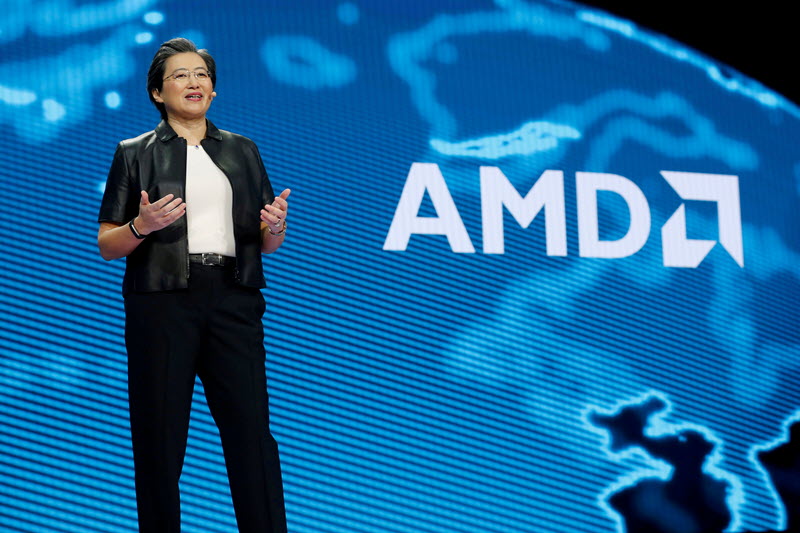Asia FX dithers as dollar steadies before Powell speech; yen muted after CPI data
SANTA CLARA, Calif. - Advanced Micro Devices (NASDAQ:AMD), a prominent semiconductor company with annual revenue of $25.79 billion and market capitalization of $167.27 billion, announced today the completion of its acquisition of ZT Systems, a key provider of AI and general-purpose compute infrastructure for major hyperscale providers. According to InvestingPro data, AMD maintains strong financial health with a robust current ratio of 2.62, positioning it well for this strategic move to address the data center AI accelerator market, which is projected to reach $500 billion by 2028.
The acquisition merges AMD’s GPU, CPU, and networking silicon with ZT Systems’ rack-scale systems capabilities and open-source ROCm software. This combination aims to create a new class of end-to-end AI solutions and accelerate the deployment of AMD-powered AI infrastructure optimized for the cloud. With revenue growth of 13.69% in the last twelve months and a strong financial health score rated as "GOOD" by InvestingPro, AMD appears well-positioned to execute this strategic expansion.
AMD’s Executive Vice President Forrest Norrod, who leads the Data Center Solutions business unit, stated that this acquisition marks a significant milestone in AMD’s AI strategy. It is expected to offer leadership training and inferencing solutions that are ready-to-deploy at scale and optimized for customers’ unique environments.
The company anticipates the transaction to be accretive on a non-GAAP basis by the end of 2025. As part of the acquisition, ZT Systems’ former Founder and CEO, Frank Zhang, joins AMD as senior vice president of ZT Manufacturing. Doug Huang, former President of ZT Systems, is appointed as senior vice president of Data Center Platform Engineering. Both will report to Norrod and play pivotal roles in the design and customer enablement of data center AI solutions.
AMD is also actively seeking strategic partners to acquire ZT Systems’ U.S.-based data center infrastructure manufacturing business within the year.
The acquisition is expected to reduce the time required to design and deploy cluster-level data center AI systems, providing a competitive edge for AMD’s customers. The company’s commitment to an open ecosystem approach, combining open-source software with industry-standard networking technologies and now ZT Systems’ systems design expertise, is central to this strategy.
This development is based on a press release statement and reflects AMD’s ongoing efforts to innovate and expand its footprint in the high-performance computing and AI sectors. Currently trading below its Fair Value according to InvestingPro analysis, AMD shows promising growth potential with analysts forecasting increased profitability this year. For deeper insights into AMD’s valuation and growth prospects, including 15 additional ProTips and comprehensive financial metrics, investors can access the full Pro Research Report on InvestingPro.
In other recent news, Advanced Micro Devices (AMD) has announced the availability of its Versal AI Edge XQRVE2302, a space-grade device qualified for spaceflight, now ready for order. This device is part of AMD’s adaptive SoC portfolio, designed for AI inferencing in space applications. Meanwhile, Jefferies downgraded AMD’s stock from ’Buy’ to ’Hold’, citing challenges in the AI market and increased competition from Intel. The firm also lowered its price target from $135.00 to $120.00, reflecting concerns about AMD’s performance in AI and competitive pressures.
Additionally, Mizuho Securities has revised its price target for AMD to $120.00, maintaining an ’Outperform’ rating. Mizuho’s analysis indicates potential headwinds in AMD’s AI sector but highlights strong prospects in the server and PC markets. In another development, AMD is collaborating with Cisco, Nokia, and Jio Platforms to create the Open Telecom AI Platform, aiming to enhance telecom infrastructure with AI-driven solutions. This partnership will leverage AMD’s computing technologies alongside contributions from Cisco and Nokia.
These recent developments reflect AMD’s strategic moves in both space and telecom sectors, as well as the challenges it faces in the AI market.
This article was generated with the support of AI and reviewed by an editor. For more information see our T&C.
